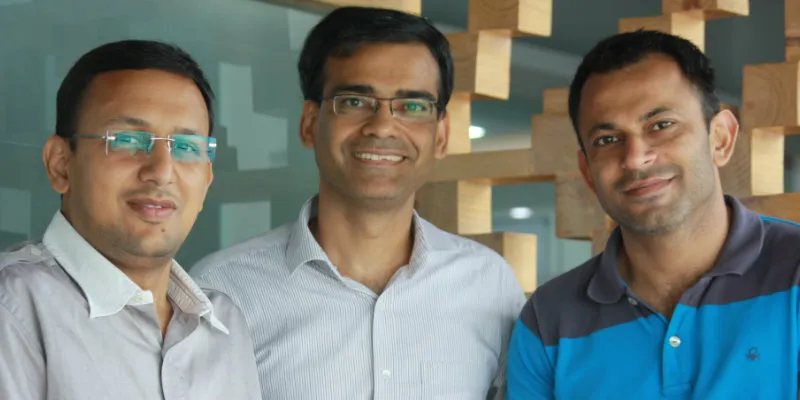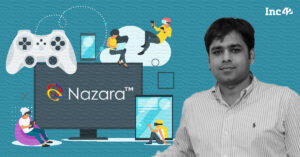When Alok Mittal started lending platform Indifi, there was no doubt in his mind that the SME and MSME segment was underserved.
Alok had found that close to 85 percent of SMEs and MSMEs weren’t getting formal credit of any form. Further analysis revealed a whopping $397 billion of unfulfilled credit requirement in the segment.
This led him to found Gurugram-based Indifi in 2015 with Siddharth Mahanot. Since then, the lending startup has disbursed 30,000+ loans across 12+ industries, actively leveraging its extensive network of 20+ lenders, including its in-house NFBC Riviera, and 80+ partners.
The team claims it has disbursed close to Rs 1,500 crore in loans. The startup recently raised Rs 35 crore in debt financing from IndusInd Bank Ltd, with a guarantee from US International Development Finance Corporation (DFC).
Today, Indifi is making money on a unit basis on every loan they offer.
“As a company we are not yet profitable, but the objective is to be in the next 12 to 15 months,” Alok says.
The team was able to do this by setting unit profitability as one of its early goals, as lending isn’t a lifetime value business.
“Someone who has taken a loan from us will come back to us in the next cycle, but we’ll also work with a player. So, we wanted to make sure that every loan is profit making. That was one of the core goals we set in the first two years,” Alok says.

From left: Indifi Technologies co-founders Siddharth Mahanot (COO), Alok Mittal (CEO) and Sundeep Sahi (CTO).
Focus on three business verticals
A stronger focus on the three business verticals helped Indifi get on track. The first was: could it solve the underwriting problem? The next step was focusing on large marketplaces and partnering with them; this improved scalability.
“The third was the supply side model where we don’t put all the capital from our own balance sheet. Almost a third of our business today comes from the marketplace construct where other banks and NBFCs lend to our platform,” Alok explains.
The founder says the team focused on on-ground execution and relevant market segments, including the service sector and digitally aware businesses, to help streamline and focus.
The idea was to build a strong data platform to help integrate with several marketplaces and public data sources. It had to be a multi-lender platform so that different lenders could be a part of it, and configure their underwriting criteria and processes.
Sandeep Farias, Founder and Managing Partner, Elevar Capital, an investor in Indifi, says, “The founding team had done deep research. The MSME space in India has high growth and reach. They saw it as a risk discrimination problem, to figure out who’s creditworthy and who’s not. Because 85 percent of Indian entrepreneurs represent small businesses and can’t be unworthy of credit.”
Not his first rodeo
Entrepreneurship isn’t new to Alok. Apart from Indifi, he was the founding board member of Indian Angel Network (IAN) and co-founded JobsAhead, which was acquired by Monster.com.
Alok was looking to return to his entrepreneurial roots while US-based VC firm Canaan Partners was looking to set up its base in India. Caanan brought Alok on board, and he worked with the firm for nine years.
At Canaan, Alok says he had three ideas that he thought were worth pursuing: lending to SMEs, chronic disease management, and supplementary education. He chose to invest in startups working in the two latter sectors but decided to launch Indifi.
“There was a significant focus on consumer lending but not SME lending. My involvement with internet businesses in India as part of my investment role revealed that every large online platform had deep interactions with small businesses on the supply side. Be it Ola or Uber working with drivers or Flipkart or Amazon working with merchants, the supply side is made of millions of small businesses.”
Alok explains that at one point the narrative was also that online businesses wouldn’t grow or flourish until the supply side saw growth and digital transformation.
“I don’t come from a lending background so one of the first things I did was seek out a co-founder. Siddharth had a background in small businesses and was aware of the problems the segment faces. He brought insights on why these segments were underserved in terms of credit, and the innovation that can be brought in the space,” he says.
His connections on the marketplace side made the transition to entrepreneurship easier for Alok.
In any lending business, the first questions that crop up are ‘how are you going to distribute?’, ‘how you’re going to get customers?’, and others – especially as the conventional model has been brick and mortar.
“We think that that is one of the reasons why so many people don’t get credit…the model is inherently horizontal. If I have a branch, I want to serve everyone in the three and five km radius. In our minds, the way to solve the creditworthiness problem was to go deep in certain industry verticals. We saw online partners as natural partners who could market to their supplier base.”
Tapping data and tech
Indifi integrates with public data sources like bank statements, bureaus, tax returns, India Stack etc. They also have integrations with 30 spoke integrations with different multicast platforms. Customers and merchants can apply to them, and their data can be shared through those interfaces. All accounting happens through these interfaces.
On the other side are lenders who can join and configure scorecards on what they want to do on the platform. For not everyone wants access to the entire merchant base. They can use Indifi’s credit models and put in their own criteria.
“Their onboarding journeys are configured on a platform. So, if someone wants to do electronic signature versus someone who wants to do field investigation … not all of those different configurations are uploaded onto our platform,” Alok says.
The first four to five months went in building this version of the platform. Meanwhile, the team signed up four partners on the marketplace side. Apart from access to data, analytics holds the promise to draw insights that improve the quality of credit decisions, thereby reducing credit costs.
“Over time, we’ve gotten better at figuring out which verticals we should go after; where it is that the requirement for our kinds of funds exists. What kind of products to create to mitigate risk and increase approval rate. One of the things that our partners want from us is really high approval rates,” Alok says.
After three years, Indifi opened other distribution channels instead of just partnerships. “We innovated in creating a marketplace platform where other lenders could come in and lend using our algorithms, rather than only us using our balance sheet, which is a relatively asset-intensive business.”
The segment
Early on, Indifi also focused on building robust security infrastructure. The platform has an ISO 27,001 certification on security elements. Sandeep, of Elevar, explains that the team has worked closely in the space, and has complementary skill sets.
The MSME sector is growing at a fast clip, and its contribution to India’s GDP continues to soar. According to Confederation of Indian Industry (CII), MSMEs contribute 6.11 percent to the manufacturing GDP, 24.63 percent to the GDP from service activities, and 33.4 percent to India’s manufacturing output. Despite the huge contribution, the sector is considered laid back.
Others in the lending segment include LendingKart, NeoGrowth, Vivriti Capital, Shubh Loans, Happy Loans, KhataBook, and OkCredit.
“The MSME space is large, with several spaces and segments. There are many players but each has a significant offering. What makes Indifi different is the moats they have been able to build,” Sandeep says.
Take deeper credit risks
Alok explains the pandemic worked as a stress test for their credit algorithms, helping them look at the fault lines and updating them. Another important factor that worked in their favour was that the team looked at the portfolio from a customer level to understand which customers were still in business, which were stressed, and which were out of business.
In lending businesses, this analysis is often done on a full segment level. “We get micro-level data for customers through our partners. This has allowed us to create customer-specific collection and restructuring strategies,” Alok says.
Indifi recently forayed into the pharma segment and will be extending its credit line solution to retailers, especially pharma distributors and local chemists, to help them manage their working capital needs and cash flows.
“We are the only ones who have taken an industry-specific approach to business. Most of our peers have taken a relatively horizontal approach. This is not to suggest that they will not do well; this is only to suggest that within the verticals that we are operating in. We believe that we have solved better for the underwriting and origination challenges,” adds Alok.
Indifi claims to have “four to five percent losses at the moment” and aims to expand into the newer verticals in the near future. The team is looking at onward lending to small businesses to accelerate post-COVID economic recovery.









